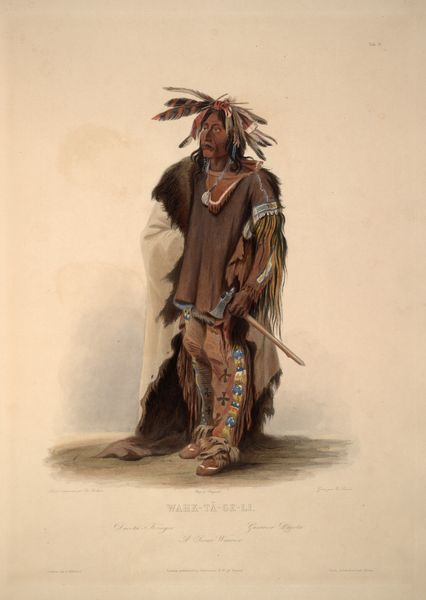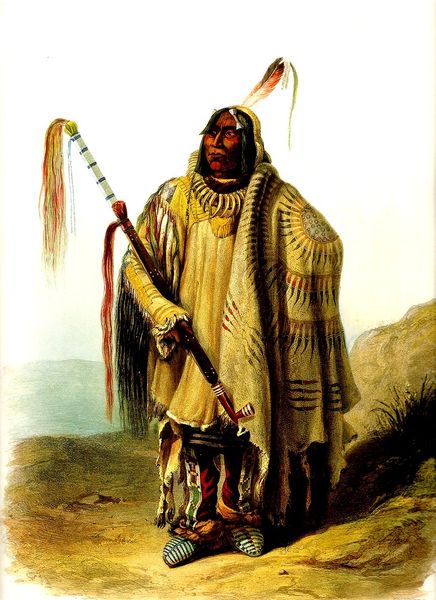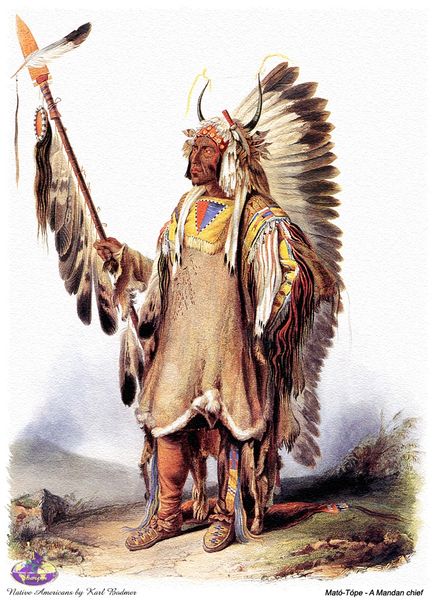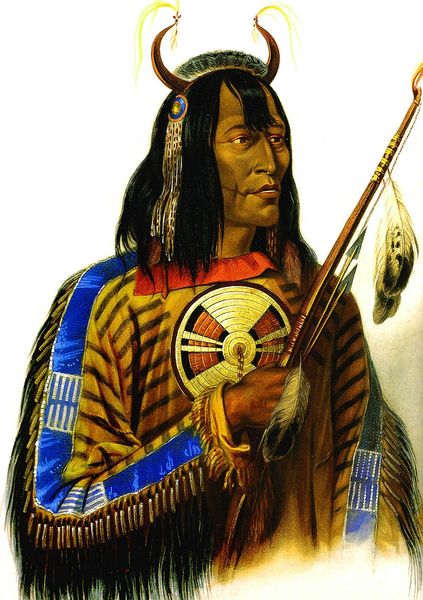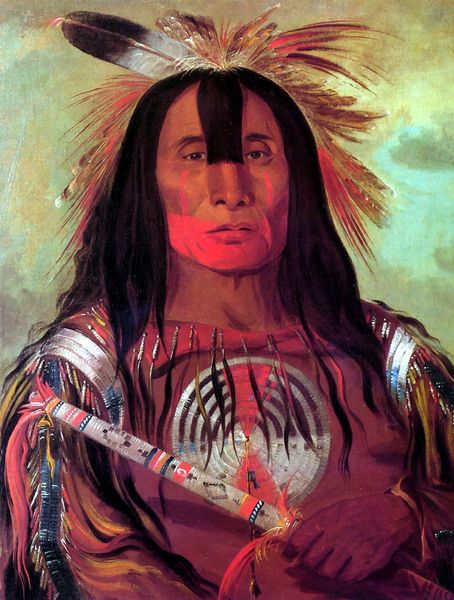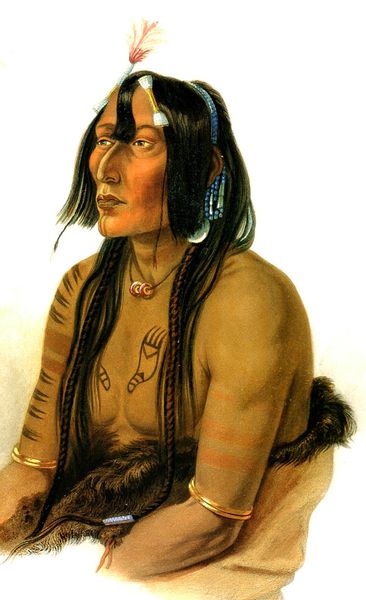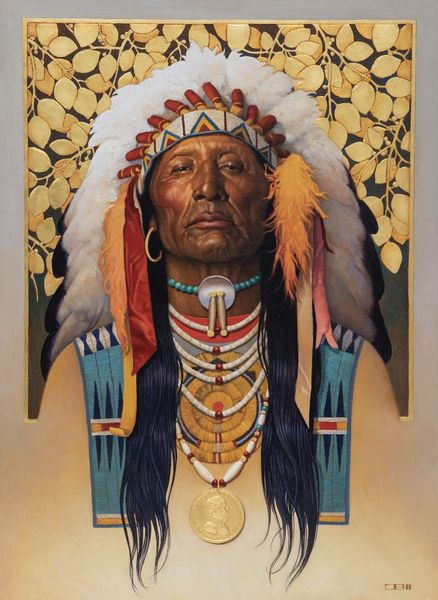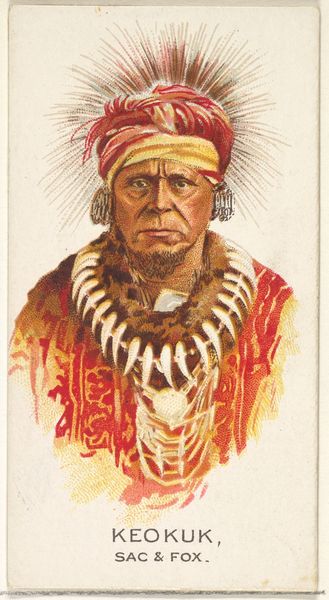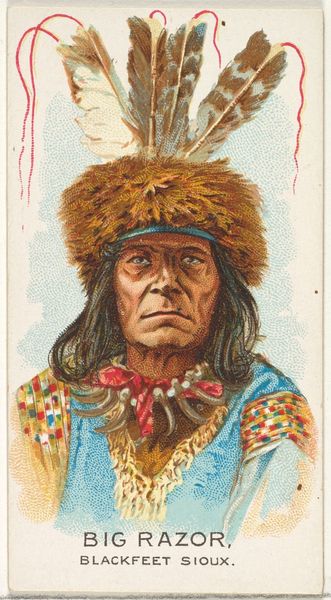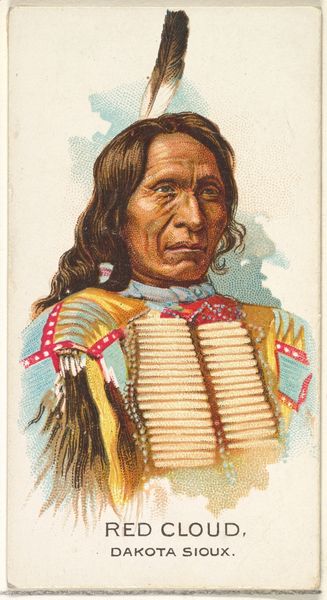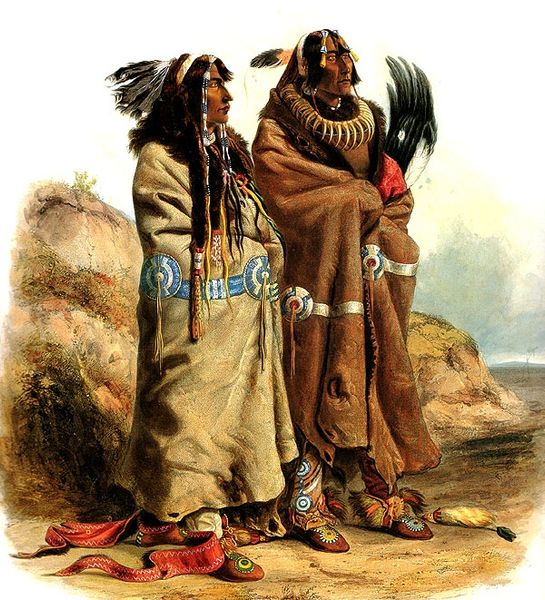
painting
#
portrait
#
painting
#
male portrait
Dimensions: 44 x 55.4 cm
Copyright: Public domain
Curator: Welcome. Here we have Karl Bodmer’s 1833 portrait of "Wahk-ta-Ge-Li, a Sioux warrior." What are your first impressions? Editor: Immediately, the image's romanticized depiction of its subject strikes me—the noble savage trope feels quite pronounced here, with its strong contrasts and exotic details of dress. Curator: Indeed, observe the use of light and shadow. The composition employs chiaroscuro to emphasize the subject's face, drawing the viewer's eye to his gaze and features. It's very deliberately posed, imbuing him with a certain grandeur. Editor: But consider the implications. While technically proficient, these depictions often served a political purpose, flattening diverse Indigenous identities and justifying colonial narratives. Was Bodmer actively interrogating this dynamic, or simply perpetuating a stereotype? Curator: From a formal perspective, the detailed rendering of textures—the fur, the feathers, even the ornamentation on his leggings—demonstrates considerable artistic skill and an effort for fidelity, although obviously interpreted through a European lens. The details certainly invite contemplation of Indigenous craftsmanship and material culture. Editor: But how does this portrait interact with the larger history of the era? European artists like Bodmer capitalized on romantic depictions of native peoples, often obscuring brutal realities of settler colonialism and systemic violence against these very people. The narrative and symbolism in this portrait—can we separate it from that? Curator: We cannot separate art from history. And this intersection complicates how we examine the choices in representing cultural otherness. Bodmer’s emphasis on surface elements distracts us from underlying themes like displacement and cultural erasure, or simply reinforces a western view of indigenous culture as 'noble' yet fading. Editor: Precisely. That understanding shifts how one interprets the artwork's power. Thanks for giving me language to consider this problematic context more closely.
Comments
No comments
Be the first to comment and join the conversation on the ultimate creative platform.
